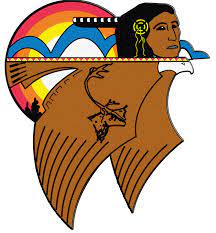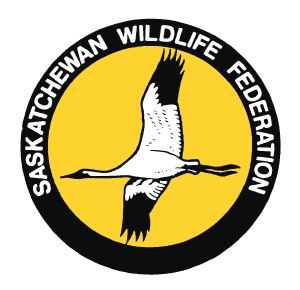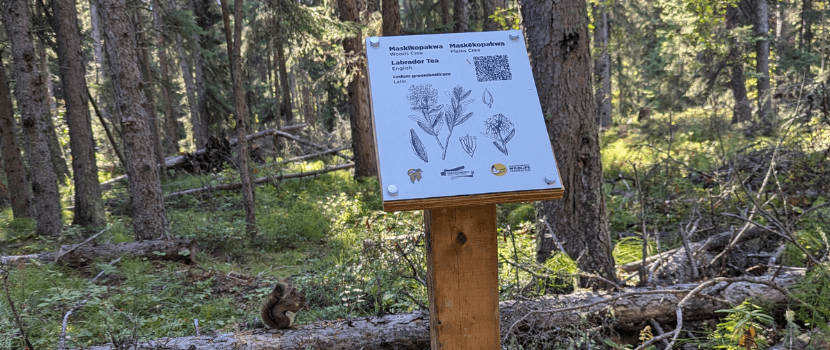
Latin binomial name: Ledum groenlandicum
Woods Cree name: maskīkopakwa
Plains Cree name: maskēkopakwa
Labrador tea is a low shrub found in bogs, swamps, and moist lowland woods in nutrient poor soil. This plant keeps its leaves all year round though they often turn brownish orange in the winter. The leaves alternate around the stem like a spiral staircase. The leaves are thick and leathery with orange fuzzy hairs on the underside. White coloured flowers sit on top of the plant.
Labrador tea or ‘muskeg tea’ is an all-time favourite, it can be picked year-round but easiest in the spring through summer months. Most used as a tea and often mixed with wild mint to add a pleasant flavour and aid with coughs, fevers, and diarrhea. Any leftover tea is a great face wash and astringent to help clear up acne and acne scarring. Another interesting use I have heard of in the north is “dusting powder” like baby powder made from grinding the leaves to prevent rashes. Imagine seeing the sea of muskeg and a field of white flowering Labrador tea as a child, how magical the spongey earth beneath you feels, it is comforting, you can fall, and she catches you in her soft gentle embrace. I once heard my mother talking about my capan (great grandmother) looking into the muskeg with fear and longing, and that they would go into the forest to gather in secret.
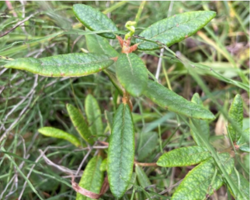
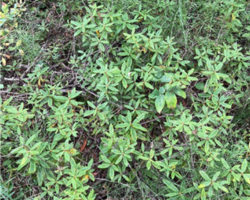
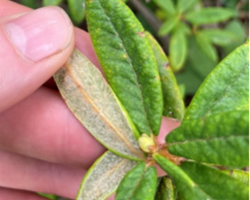
In partnership with
